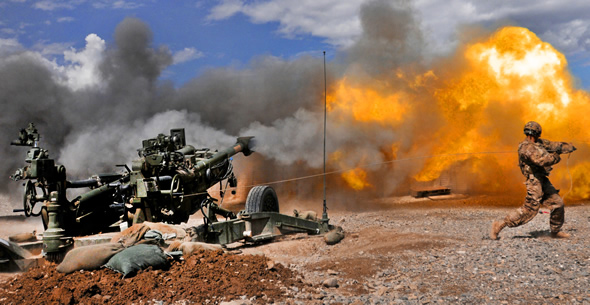Saudi Arabia is seeking to equip three field artillery regiments, two will be equipped with advanced lightweight M777A2 towed howitzers and one with air-transportable M119As, both produced by BAE Systems. The three artillery battalions (53 guns) and associated target acquisition and fire locating radars, in an arms package worth about $886 million.

The package includes two regiments (36 guns) of M777A2 and one regiment equipped with17 M119As howitzers, each unit to be supported by with two TPQ-36 ‘Fire Finder’ radar systems. The units will also deploy with standard U.S. Army artillery C4I systems (Advanced Field Artillery Tactical Data Systems – AFATDS). The package will also include 19,440 rounds of ammunition, including 17,136 rounds of the M107 High Explosive (HE) rounds and 2,304 extended range, Rocket Assisted Projectiles (M549 RAPs). The package will also include 60 M1165A1 High Mobility Multipurpose Vehicles (HMMWVs), 120 M1151A1 HMMWVs, 252 M1152A1 HMMWVs, and export versions of the Single Channel Ground And Airborne Radio Systems (SINCGARS) supporting the C4I system.
Among the companies providing the hardware for this package are BAE Systems in the United Kingdom, the prime contractor for the howitzers, AM General, providing the vehicles and ITT Defense and Information Solutions providing the radios. Thales Raytheon Systems will deliver the radars. Other suppliers include Smith Detection, SRCTec, Northrop Grumman Corporation and General Dynamics C4 Systems.

















